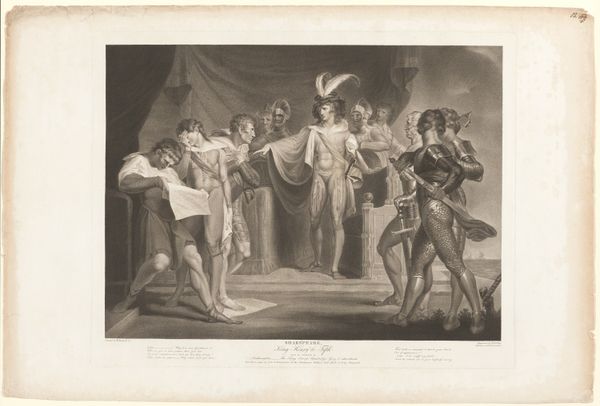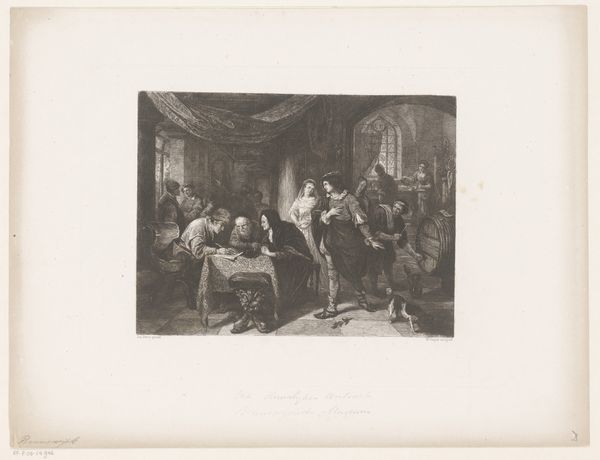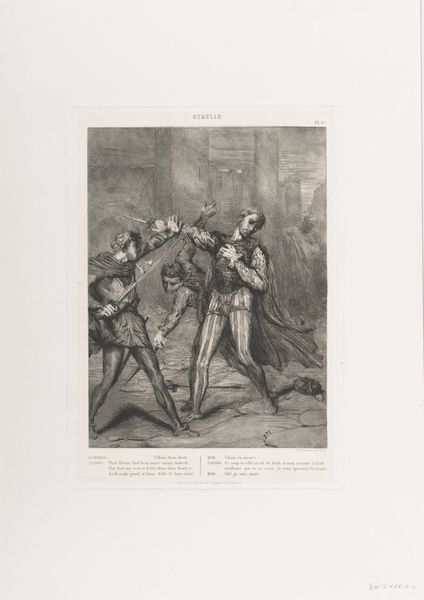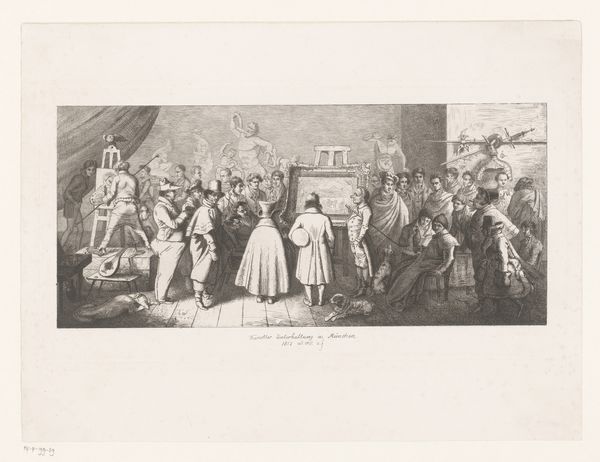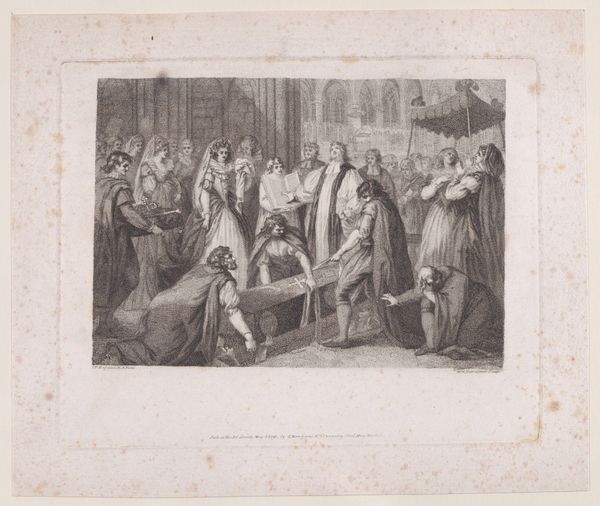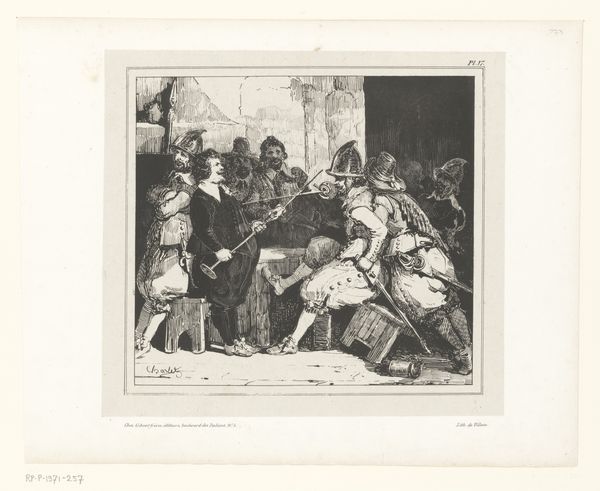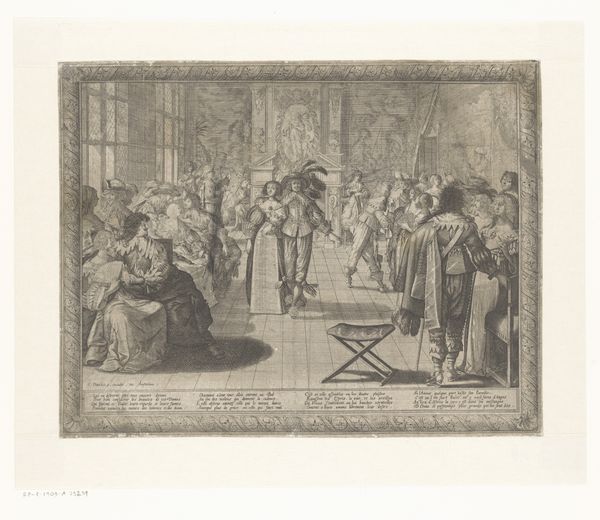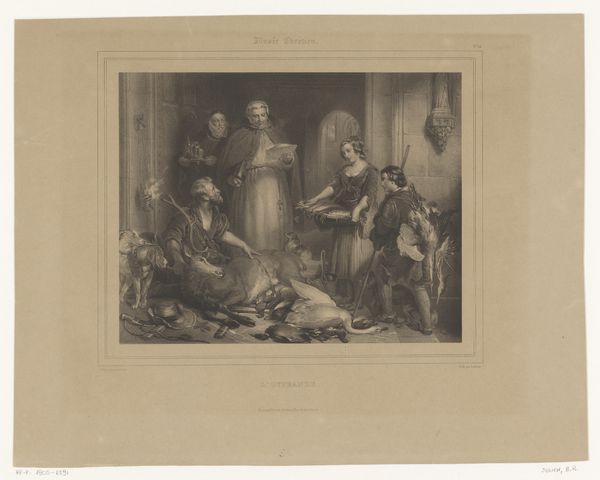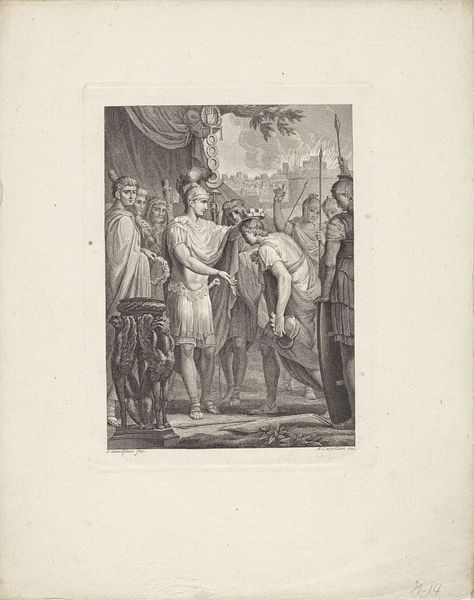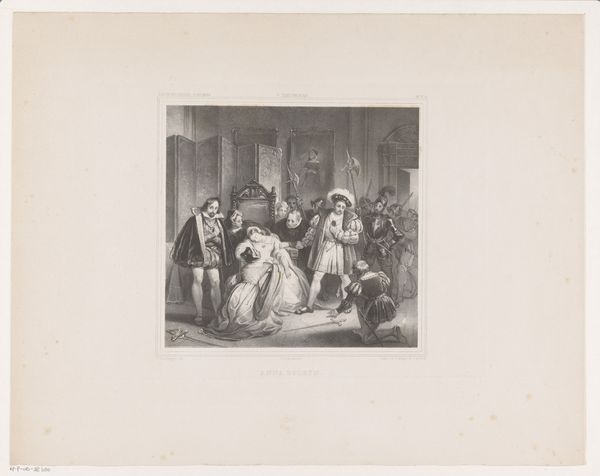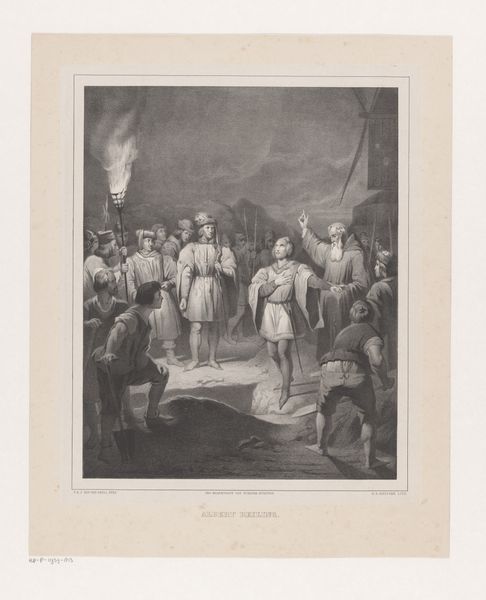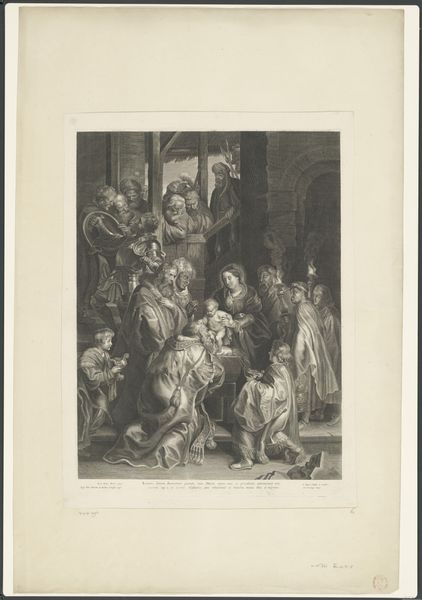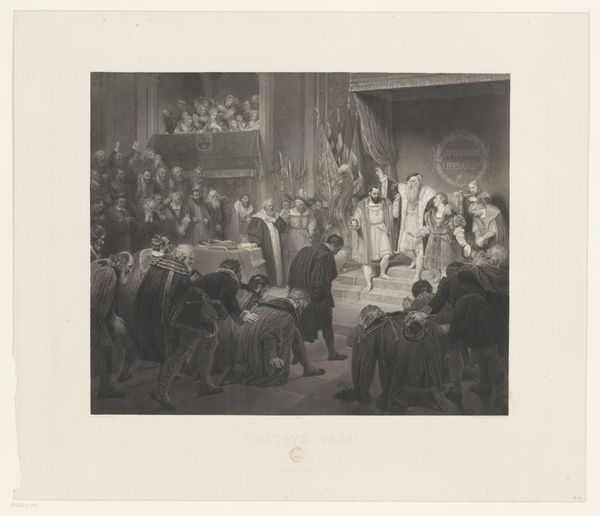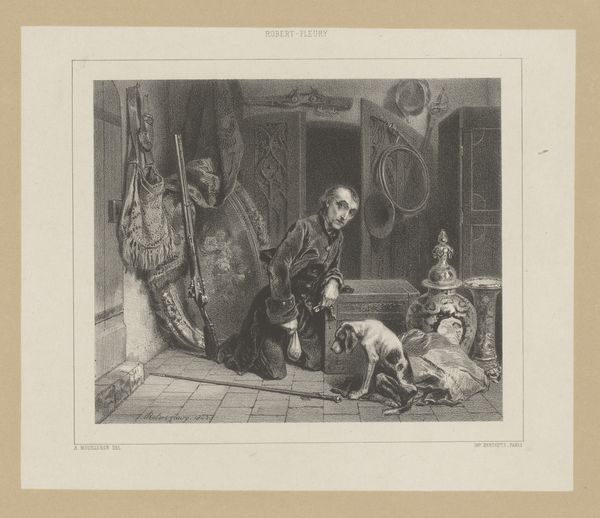
Dimensions: height 342 mm, width 506 mm
Copyright: Rijks Museum: Open Domain
Curator: Oh, this piece! The energy is…stifled, somehow. Like holding your breath in a very tense room. Editor: Indeed. What you are feeling likely arises from what’s depicted in this print by Alexander Ver Huell titled “Moord op Hendrik van Guise,” or “Murder of Hendrik van Guise,” completed around 1866. Curator: Ah, that explains it! The lighting—all high contrast and dramatic shadows—certainly leans into the impending doom, doesn't it? You can almost hear the metallic shink of the swords! Editor: And doom it was! Historically, Hendrik's assassination was a pivotal moment in French history. He was, at the time, a powerful Duke, and his death served as a crucial event during the height of the religious wars dividing France in the late 16th Century. This depiction reveals much about how such conflicts often reduce down to acts of raw political violence. Curator: And the faces, they're rendered so precisely! Look at the central figure, Guise himself; there's a flicker of shock, maybe disbelief. The print manages to communicate a whole history just in that expression. Even with, you know, the constraints of ink on paper! Editor: Ver Huell's choice of the print medium allowed for widespread dissemination of the narrative. Think about it: making potent imagery accessible—how did such availability perhaps ignite certain factions of support or resentment at the time of distribution? Curator: It really does encourage thinking on such violence and the kind of reverberations of trauma it carries. Also, it almost makes you wish he went full color here, despite the strength of just the etching! Imagine that clash rendered with reds and golds, ugh, could be terrifying. Editor: A color explosion would arguably distract from what, I suggest, Ver Huell is seeking: a deep contemplation on power dynamics, a study in human ruthlessness… it forces a kind of somber reflection. This restraint almost grants the work greater emotional resonance, drawing viewers into uncomfortable but necessary conversations surrounding themes of justice and historical truth. Curator: Perhaps you’re right. There's a lingering bleakness to the monotone, absolutely. So glad the Rijksmuseum has made space for some contemplation for it here, or I would've missed it all together. Editor: Agreed. And thank you for lending your astute artist's eye to better consider such a compelling representation of our complicated human experience.
Comments
No comments
Be the first to comment and join the conversation on the ultimate creative platform.
